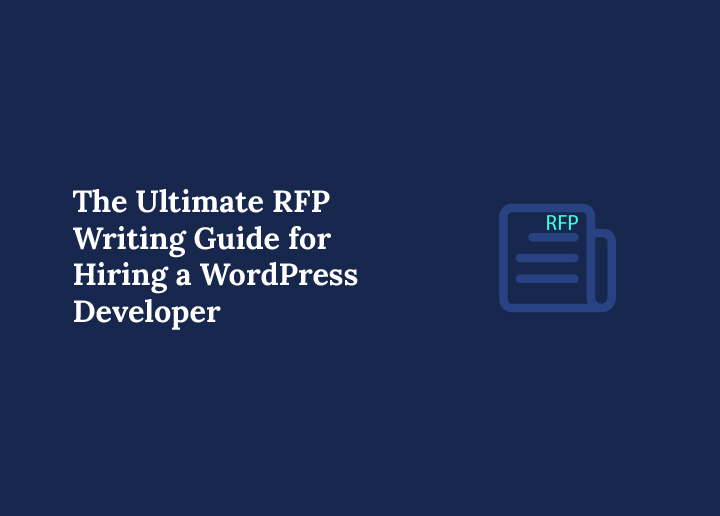Hiring a WordPress developer who’s right for your project can be the turning point for your online presence. A skilled developer can bring your vision to life by creating a seamless website that aligns with your brand and offers an excellent user experience. To attract top talent, it’s essential to communicate your project details clearly. This is where a well-crafted Request for Proposal (RFP) comes in. An RFP is a vital tool that outlines your project’s objectives, technical requirements, and success criteria.
By clarifying these details upfront, an RFP allows developers to gauge whether they fit and tailor their proposals to meet your needs. This structure minimizes misunderstandings and ensures your project aligns with your expectations, helping you avoid costly revisions or delays.
This guide will take you through every essential step in writing a comprehensive, effective RFP for hiring a dedicated WordPress developer. Let’s dive in!
What is an RFP, and Why Does Your WordPress Project Need One?
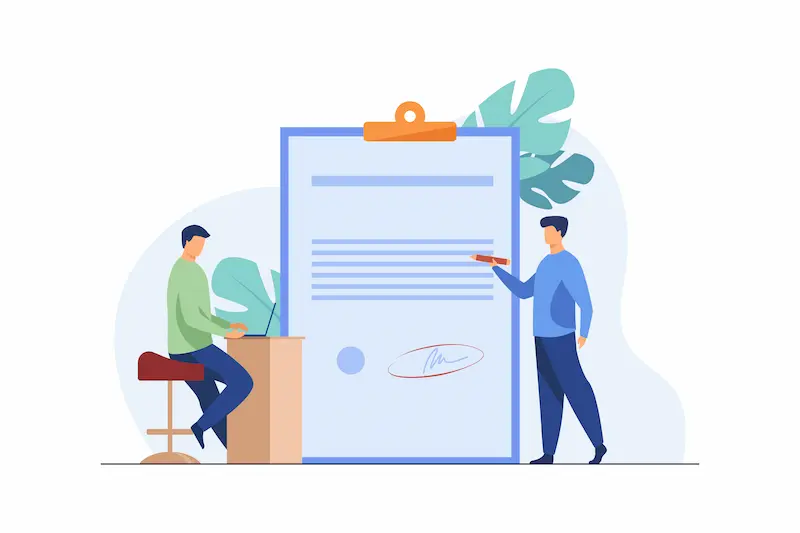
An RFP is a formal document that helps you communicate your project’s needs, goals, and specifications to potential developers. Think of it as a detailed blueprint that allows WordPress developers to understand exactly what you’re looking for. By defining your project parameters from the start, you’ll attract proposals from qualified developers and simplify your hiring process.
Without an RFP, you risk receiving proposals that don’t align with your vision, leaving room for costly miscommunication and delays. A well-drafted RFP not only clarifies your expectations but also highlights your project to serious, high-quality developers eager to meet your needs.
Explore: Guide to Creating Your Website Design RFP
Find the Perfect WordPress Developer for Your Development Project!
Ready to bring your WordPress vision to life? Our expert developers are here to build, customize, and optimize your site for success. Start with a powerful foundation by partnering with seasoned professionals.
When to Use an RFP and When to Explore Other Options
An RFP (Request for Proposal) is a powerful tool in your web project toolkit, but it is not always the best starting point. Understanding when to invest in the RFP process and when to consider alternative approaches can save your team time, money, and unnecessary complexity.
When an RFP Makes Sense
RFPs are ideal for B2B organizations, law firms, nonprofits, and government agencies that need to document a clear, formalized selection process. Writing an RFP is a smart move if your website design and development project involves multiple stakeholders, a substantial budget, or long-term strategic goals like search engine optimization, ecommerce functionality, or inventory control.
You should consider writing an RFP when:
- Your organization requires transparency and due diligence in vendor selection
- The project involves a complex design and development scope that cannot be covered by a quick call or email
- You plan to compare multiple proposals from freelancers, agencies, or development firms
- You are redesigning an existing website and need structured input from professionals who understand current UX best practices, compliance standards, and performance overhaul needs
- Your internal project managers and content marketing team want to assess vendors based on defined selection criteria, such as technical skills, platform familiarity (e.g., WordPress, Drupal, or custom web applications), and experience in your industry
In these cases, a structured website RFP improves your chances of finding a vendor who aligns with your goals, team culture, and required tech stack.
When You May Not Need an RFP
On the other hand, an RFP may not be necessary if:
- The project involves a minor website update or the creation of a standalone landing page.
- A reliable freelancer or partner is already in place, familiar with your business and experienced in handling similar tasks.
- Clarity on your website’s goals, features, and deliverables is still forming, as you are in the early exploration phase.
- Speed is essential for your timeline; going through a formal RFP process would create delays.
- Budget constraints are a concern, and you are considering more adaptable approaches such as hourly consultations, audits, or initial wireframing.
In these cases, preparing a project brief or initiating a discovery process with one agency or consultant may be more efficient. That approach encourages collaboration while allowing space to clarify your goals before you commit to a complete web development engagement.
Tip: Focus on Value, Not Just Price
Regardless of your approach, the goal is to find a vendor who can deliver measurable results, not just the lowest cost. Many website agencies report that clients who skip the RFP often price shop, overlooking long-term value propositions, strategy, and post-launch support. Whether or not you use a formal RFP template, clarity, communication, and shared expectations lead to successful website projects.
Step-by-Step RFP Guide for Hiring a WordPress Developer
Writing an effective RFP is the key to finding a skilled WordPress developer who truly understands your project needs. Follow the steps below to attract the best talent and set your project up for success.
Step 1: Define Your Project Scope and Requirements
Your RFP should begin with a clear outline of the project scope and requirements. This section helps potential developers understand your project’s scale and specific needs. Here’s a checklist of details to include:
- Project Goals: Briefly state the purpose and expected outcomes of the project.
- Target Audience: Describe your ideal audience and what their needs are.
- Design Requirements: Outline visual and aesthetic requirements, including preferred colors, themes, or styles.
- Functional Specifications: List features like e-commerce capabilities, blog sections, SEO functionality, and mobile responsiveness.
- Platform Requirements: Specify if you’re looking for a custom-built site or need integrations with other tools (like CRMs or analytics software).
By clearly defining your project scope, you give developers a sense of the overall project scale and allow them to assess whether they have the resources and experience to deliver successfully.
Step 2: Pre-RFP Outreach and Vendor Research
Before you begin writing an RFP, taking a strategic pause and engaging in pre-RFP outreach and vendor research is essential. This step lays the foundation for a smoother RFP process, better proposal responses, and ultimately, stronger vendor selection.
Understand the Landscape
Start by researching the types of website agencies, freelancers, or development firms that serve your industry. Whether you are a B2B tax law firm, a nonprofit, or an ecommerce company, you will want to identify vendors with relevant case studies, platform expertise (such as WordPress, Drupal, or custom CMS solutions), and experience with similar website projects.
Use platforms like Clutch, GoodFirms, or DesignRush to filter by ratings, specialties, and client reviews. Visit agency websites to study their design style, process, and content marketing approach. This step helps you create a shortlist of potential vendors and avoid sending your RFP into the void.
Initiate Conversations
You do not need to wait to connect until your RFP document is complete. Reach out to a few vendors early and ask questions about:
- Typical project timelines and team structures
- Their discovery or website design process
- Red flags or scope creep they commonly encountered
- What makes an effective request for proposal from their point of view
These conversations help refine your website objectives, clarify your project management expectations, and improve the clarity of your final RFP.
Step 3: Identify the Skills and Experience Needed in a Developer
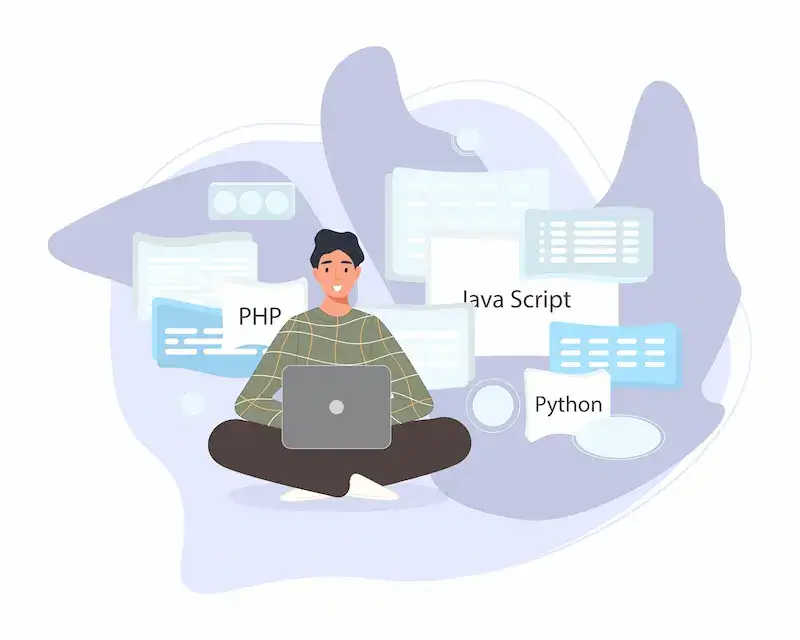
A successful WordPress project requires certain technical skills and experience. The more specific you are about the skills you seek, the better your chance of attracting the right talent. Here’s a look at skills you may want to highlight:
- WordPress Core Knowledge: Understanding the ins and outs of WordPress core functions is essential.
- PHP, HTML, CSS, and JavaScript Expertise: These are the building blocks of any WordPress site, and your developer should be proficient in each.
- Theme Customization: Experience in creating and modifying themes is crucial, especially if you want a unique look and feel.
- Plugin Development: If you need custom WordPress plugins, specify experience with plugin creation and integration.
- SEO Best Practices: SEO knowledge will help ensure your site is optimized from the start.
- Familiarity with Popular WordPress Tools: Tools like WooCommerce, Elementor, and AIOSEO are commonly used, so if relevant, consider listing these.
Ask for examples of past work and project experience to verify that the developer possesses the required skills. Additionally, consider specifying years of experience or any certifications relevant to your project.
Step 4: Essential Sections to Include in Every WordPress Developer RFP
A thorough RFP should contain specific sections that offer a complete view of your project. Below are some essential components:
- Project Overview: A high-level summary that describes your business, project goals, and why you’re hiring a WordPress developer.
- Project Scope and Requirements: Cover the project details, as outlined in Step 1.
- Budget and Timeline: Clarify the budget range and estimated project timeline to set clear expectations.
- Required Skills and Qualifications: Describe the technical skills, experience, and qualities you’re looking for (from Step 2).
- Submission Requirements: Specify how proposals should be submitted, including preferred format, deadline, and contact information.
- Evaluation Criteria: Outline the factors you’ll consider in making your decision, such as project fit, experience, and cost.
These sections create a framework that helps developers understand your project requirements and present their proposals effectively.
Do not miss: Top Project Management Tools For Web Agency
Step 5: Encouraging Creativity and Flexibility in Proposals
One of the most overlooked aspects of writing an RFP is giving your future website partner the room to think creatively. While a structured request for proposal is essential for communicating your project’s scope, budget, and timeline, being overly rigid can limit the quality of the proposals you receive.
Why Flexibility Matters in a Web RFP
Your website design and development needs are unique, but so is the approach each agency, freelancer, or development team might take to meet those needs. By leaving space for creative problem-solving, you open the door to innovative ideas that may go beyond your original wish list.
For example:
- You may ask for a traditional store locator feature, but a vendor might suggest integrating geolocation and personalized filters to improve user experience and increase conversions.
- Your internal team members may assume a particular CMS or tech stack is required, but the vendor may offer a better solution based on modern web technologies or improved load times.
- Instead of assigning a fixed structure for every page layout or design element, your vendor may recommend improvements grounded in accessibility, mobile responsiveness, and modern UX standards.
Giving your website designers a chance to demonstrate their strengths through customized proposals often results in better outcomes than simply asking for identical responses from all contenders.
How to Invite Creative Input
To encourage innovation and strategic thinking in your proposal responses, consider the following tips when writing an RFP:
- Focus more on your website objectives and business outcomes, and less on prescriptive design specs
- Ask open-ended questions such as: How would you approach our mobile experience? or What is your recommended strategy for SEO optimization in the new design?
- Include a section in your RFP where vendors can suggest alternatives to your approach or identify opportunities to improve efficiency, accessibility, or performance
- Allow vendors to share case studies, examples, and prior work that demonstrates how they solved similar challenges creatively
- Emphasize that you are looking for a partnership, not just a vendor to check off a list of tasks
When vendors are given the freedom to present their ideas and insights, you will learn more about their problem-solving process, how they communicate with clients, and what it would be like to collaborate during the full website redesign process.
Final Note: Collaboration Over Control
A successful web project depends as much on collaboration as on execution. When your RFP encourages adaptability and showcases your openness to new ideas, it signals that your organization is serious about quality, strategy, and innovation, not just ticking boxes. This approach attracts higher-quality responses, improves response rates, and leads to more aligned partnerships with creative, forward-thinking web development teams.
Step 6: Setting a Realistic Budget and Timeline
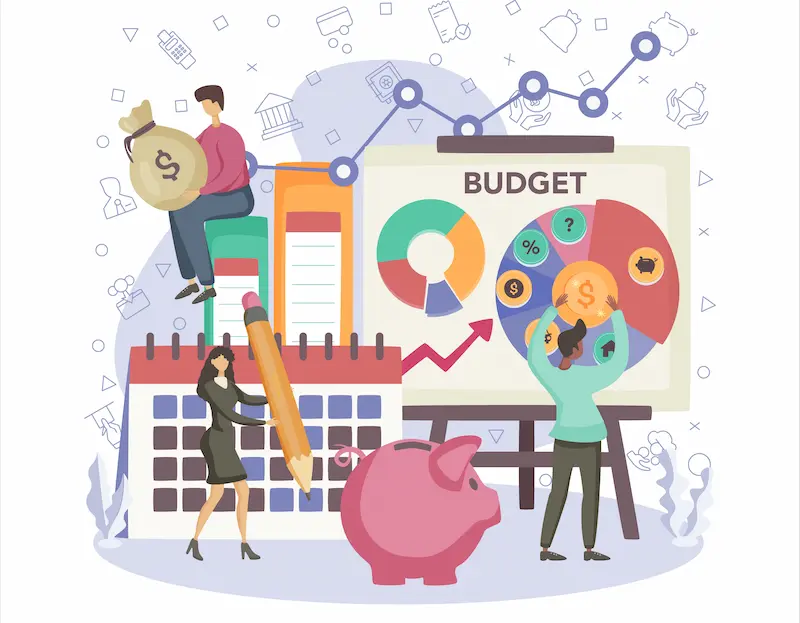
An important part of any RFP is the budget and timeline. Be transparent about the financial scope of the project and the deadline expectations so developers can bid realistically.
- Budgeting Tips: Budget can vary widely depending on the complexity and customization of the WordPress site. Research the average hourly rates or fixed costs for WordPress developers, and set a budget that aligns with your project’s demands.
- Timeline Expectations: Factor in the stages of WordPress development, from initial planning to final deployment. Allow time for feedback and revisions, and ensure the timeline is feasible for both you and the developer.
Being clear about budget and timeline helps prevent misunderstandings and sets the foundation for smooth project collaboration.
Read: Steps to Develop a Profitable Website Creation Business
Step 7: Crafting a Compelling Project Overview to Attract Top WordPress Talent
Your project overview is the section where you sell your project. Here’s what to include:
- The Problem You’re Solving: Explain the core reason behind the project.
- Your Vision and Mission: Describe your company’s purpose and what you hope to achieve.
- Why the Project Matters: Emphasize why your project is worth their time, whether it’s the potential impact, innovative technology, or another factor that makes it unique.
A compelling overview is crucial because it can draw top WordPress talent who are passionate about your goals, ultimately leading to better project outcomes.
Step 8: Setting Clear Evaluation Criteria
To simplify the selection process, set up evaluation criteria that allow you to compare proposals fairly. Criteria could include:
- Relevant Experience: How well the developer’s portfolio matches your project’s needs.
- Technical Skills: Whether they possess the specific technical skills listed in your RFP.
- Proposed Solutions: How creatively and practically the developer approaches your project.
- Budget Compatibility: Whether the proposed budget aligns with your financial plan.
Consider creating a scoring or ranking system to rate each proposal based on these criteria. This not only keeps the process organized but also helps you make a more objective decision.
Suggested Read: How to Create a WordPress Client Portal for Your Agency?
Step 9: Maintenance, Support, and Post-Launch Services
Your website design and development project should not end at launch. What happens after your site goes live is as important as the build. Your RFP should include clear expectations around ongoing support, maintenance, and potential post-launch improvements.
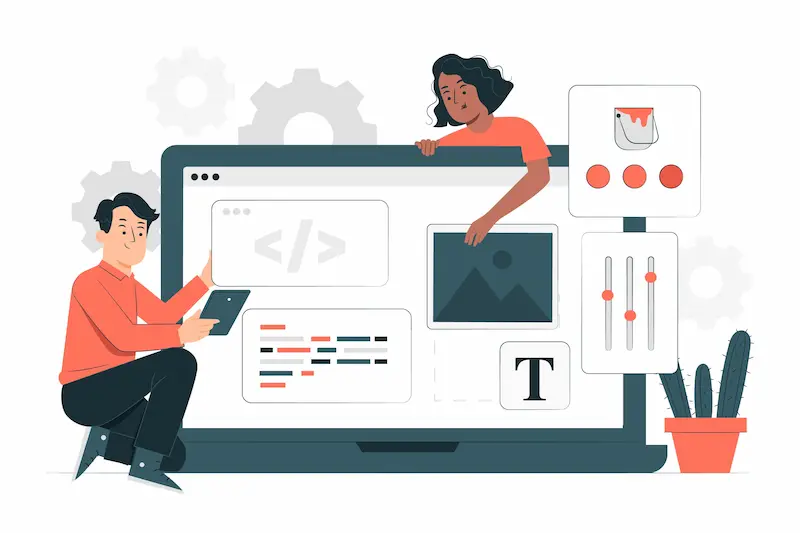
Why It Matters
Many companies overlook this step, only to face issues like outdated plugins, broken forms, poor load times, or unaddressed bugs later on. A lack of post-launch planning increases costs, delays fixes, and customer frustration. Instead, use your request for proposal to ask how vendors will support your site once it is live.
What to Include in Your RFP
Be specific when outlining post-launch needs. For example:
- Will the development firm provide monthly updates and security patches?
- Do they offer response-time guarantees or a support contract?
- Can they assist with future content updates, feature enhancements, or SEO strategy?
If your web project includes complex integrations or custom-built features, request details on documentation, training, and long-term platform compatibility. You can also ask vendors to include a maintenance plan or retainer option in their proposal response.
Build for the Long Term
A website is a living asset. Addressing support services in your RFP document shows vendors that your organization values sustainability, performance, and proactive planning. This improves your vendor selection process and builds a solid foundation for future growth.
Also Learn: Launching Your Entrepreneur Website Using WordPress: A Quick Guide
Step 10: Common Mistakes to Avoid When Writing a WordPress Developer RFP
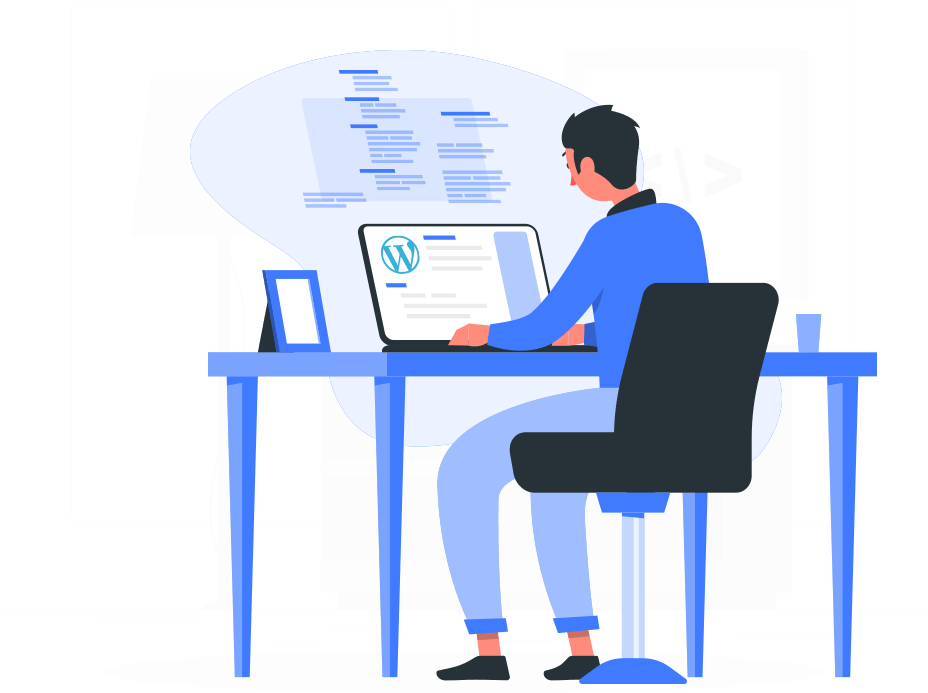
Avoiding mistakes in your RFP is just as important as including the correct information. Here are some common pitfalls:
- Vague Requirements: Ambiguity can lead to misunderstandings. Be specific about your expectations to avoid confusion.
- Unrealistic Budgets: Setting an unrealistic budget may attract unqualified developers or turn away experienced ones.
- Overly Rigid Deadlines: Allow flexibility in the timeline to accommodate unforeseen changes.
- Lack of Follow-Up: Keep the lines of communication open and be prepared to answer questions during the proposal phase.
Avoiding these errors will help ensure a smooth RFP process and attract serious, skilled developers.
Also Read: The Financial Upside of Outsourcing WordPress Service
Step 11: Sample RFP Template for Hiring a WordPress Developer
Here’s a quick outline you can follow for your RFP template:
- Project Title: [Descriptive title for your project]
- Company Overview: Brief background of your business
- Project Overview: Describe the project’s goals and unique aspects
- Scope and Requirements: Detail what the project entails, including functionality, design, and technical specifications
- Budget and Timeline: Define your budget range and timeline expectations
- Skills and Qualifications: Specify required skills, experience, and qualities
- Submission Requirements: Include proposal format, deadline, and contact info
- Evaluation Criteria: Summarize how proposals will be assessed
Use this template as a starting point and modify it to fit your unique project requirements.
Know: Best Sites to Hire WordPress Developers & Designers
Step 12: RFP Distribution and Promotion Channels
Once you finish writing an RFP, the next critical step is getting it into the right hands. Even the most well-written website RFP will fall flat if it does not reach experienced, capable vendors. A clear distribution strategy improves your response rate and ensures you attract qualified website agencies, freelancers, and development firms.
Where to Share Your RFP
Start by distributing your request for proposal through a mix of targeted and broad channels:
- Professional networks: Reach out to known contacts, former partners, or past vendors
- Freelance platforms and marketplaces: Sites like Upwork, Toptal, or Clutch help match your project with verified professionals
- Agency directories: List your RFP on platforms such as DesignRush, Agency Spotter, or Clutch
- Industry-specific forums: If you are in a niche like b2b tax law, share your RFP in relevant LinkedIn groups, Reddit threads, or Slack communities
- Your website: Publish the RFP in your resource center or blog with a clear call to action
Encourage High-Quality Submissions
In your RFP, designate a single point of contact for all communications. Provide a clear submission deadline, attach the document as a PDF, and clarify any required proposal format or template. This helps your project managers stay organized while making the process easier for potential vendors.
Step 13: Managing the RFP Response Process
Once your website RFP is live, the next step is efficiently managing incoming proposals. A well-organized RFP response process streamlines your vendor selection and ensures your project managers, stakeholders, and sales team can evaluate submissions fairly and thoroughly.
Create a Review Timeline
Set a realistic schedule for reviewing responses. Include:
- A clear proposal submission deadline
- Time allocated for initial review by your internal team
- A shortlisting phase with interviews or Q&A
- Final decision and contract negotiation dates
Outline this timeline in your RFP document so vendors can plan accordingly.
Assign Internal Roles
Designate one point of contact to handle vendor questions, and define which team members will be involved in reviewing proposals. This prevents confusion, missed messages, and conflicting feedback.
Use a shared evaluation template or scorecard to rate each proposal based on your defined selection criteria: technical expertise, prior website redesign work, project fit, and price.
Engage With Vendors Professionally
During the evaluation period, keep communication open. Respond to clarification questions quickly, host virtual walkthroughs if needed, and thank each vendor for their submission. If you plan to delay the process, send a quick update.
Once a partner is selected, respectfully notify other candidates and offer optional feedback. This will preserve your brand reputation and build goodwill with potential future collaborators.
Conclusion: Start Your WordPress Project Strong with a Tailored RFP
An effective RFP is the first step to a successful WordPress project. By following this guide, you’ll be well on your way to attracting top-notch developers who align with your vision and deliver exceptional results. Remember, a well-crafted RFP communicates clarity, shows professionalism, and sets the foundation for a strong, collaborative relationship with your chosen developer.
So take your time, be clear about your expectations, and start your WordPress project on the right foot by writing an RFP that reflects your vision and attracts the right talent.
FAQs About RFP Writing Guide for Hiring a WordPress Developer
Do I always need to issue an RFP?
No. If your website project is small, urgent, or you already have a trusted development partner, a formal request for proposal may not be necessary. An RFP is best suited for complex projects, multi-vendor evaluations, or requiring transparency.
How can I invite innovation from developers in their proposals?
Encourage creativity by focusing on your website objectives rather than prescribing exact solutions. Ask open-ended questions, and allow vendors to suggest new tools, features, or design ideas that align with your goals.
Should I include post-launch support details in my RFP?
Yes. Specify whether you need ongoing maintenance, SEO services, content updates, or technical support. This helps vendors structure their proposal responses to address both delivery and long-term success.
How many responses should I expect, and what if I get a few?
Most well-targeted RFPs receive 3 to 6 strong responses. If you receive fewer, review your distribution strategy, budget clarity, or timeline to ensure you are attracting qualified vendors.
Who should review and help create the RFP on my team?
Include key stakeholders such as your project managers, marketing team, and anyone responsible for the site’s content or functionality. Assign one point of contact to manage communication and submissions.
